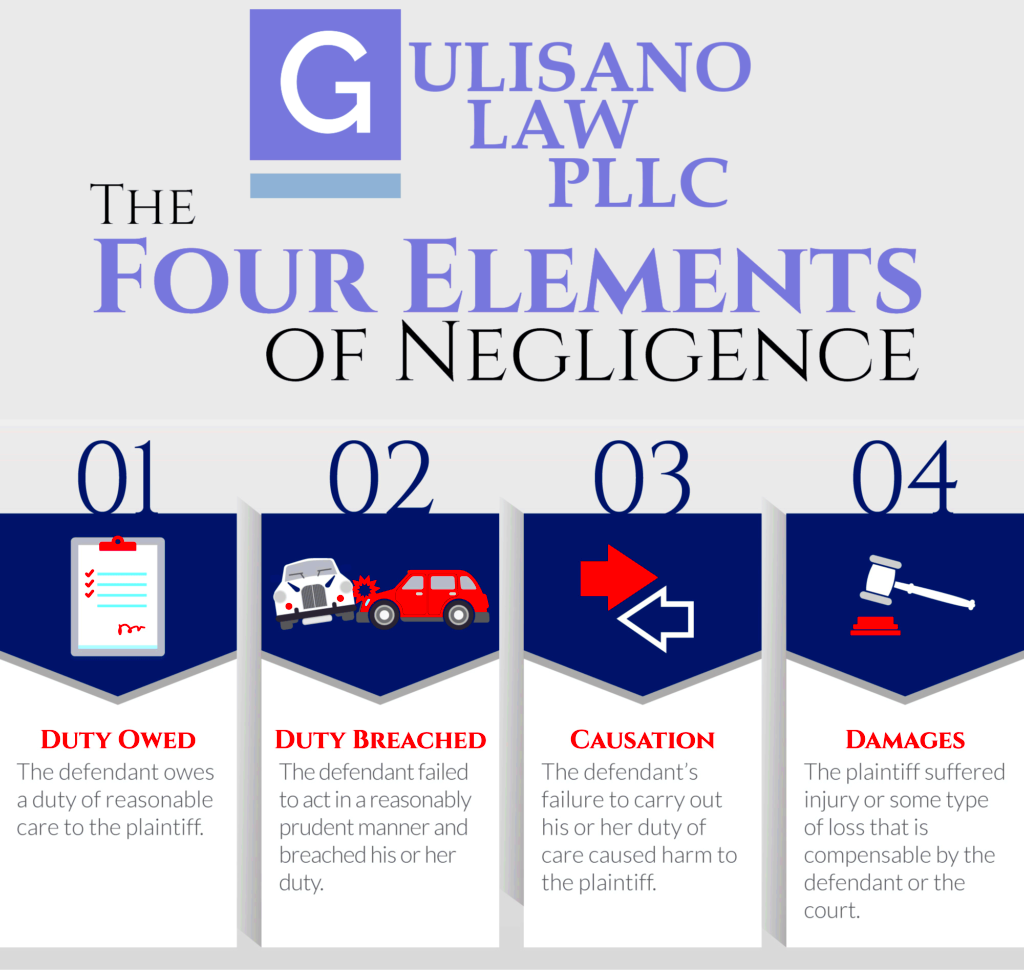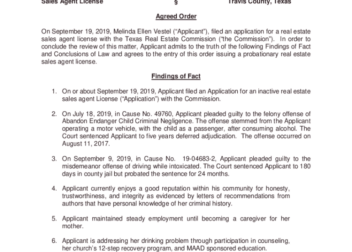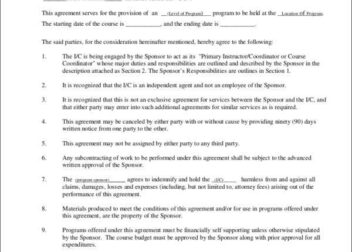Common Law Indemnity in Florida Explained
Have you ever found yourself in a position where you were blamed for something, even though you weren’t really to blame? That’s when common law indemnity comes in handy. In Florida this idea can offer protection to people and companies facing claims for damages or losses they didn’t cause. Grasping this legal concept can be challenging at first, much like making your way through a forest but it’s crucial, for finding a way out. Let’s delve into the enigma of common law indemnity and explore how it operates in the Sunshine State.
Understanding Indemnity: What It Means

Indemnity essentially involves transferring accountability from one party to another. Picture this scenario you’re behind the wheel and accidentally collide with another car. You might assume you’re at fault but what if you were following your employers orders and using their old fashioned map? This is where indemnity comes into play.
In a sense indemnity is like a promise to hold someone else’s losses or damages. It acts as a protection mechanism, ensuring that if you get into a situation due to your actions you won’t have to shoulder the entire responsibility on your own. Consider it as a backup plan for those unforeseen challenges that come your way.
Here’s a simple example:
- Indemnitor: The party who agrees to cover the losses.
- Indemnitee: The party who will be compensated for their losses.
This concept holds significance in agreements, insurance contracts and different legal arrangements. Grasping indemnity allows you to safeguard yourself and your stakes more effectively.
The Basics of Common Law Indemnity
In Florida the concept of common law indemnity is somewhat akin to a reliable companion that comes through for you in times of need. This legal principle has developed over the years and provides a means to recover costs for damages or losses in specific circumstances. Unlike indemnity, which is regulated by laws common law indemnity draws its foundation from court rulings and established principles.
Here’s a closer look at how it works:
- Origins: Common law indemnity arises from the need to prevent unjust enrichment and to ensure fairness. It’s a principle that has been shaped by various court rulings over time.
- Application: It typically comes into play in scenarios where one party is held liable for damages they didn’t directly cause. For example, if a contractor is sued for a faulty construction job but the actual issue was due to defective materials supplied by a third party, the contractor might seek indemnity from the supplier.
- Types: There are generally two types of common law indemnity—full indemnity and partial indemnity. Full indemnity covers all the costs, while partial indemnity covers only a portion.
Grasping these fundamentals can assist you in maneuvering through intricate legal scenarios involving accountability and responsibility. Its akin to possessing a guidebook in an unfamiliar place; being aware of your position can significantly impact your course of action.
How Common Law Indemnity Works in Florida
Exploring the realm of common law indemnity in Florida is akin to peeling an onion revealing more intricacies with each layer. In the Sunshine State common law indemnity goes beyond being a concept; it serves as a practical instrument to uphold fairness and justice. Allow me to give you some insights into how it plays out in situations.
Imagine you’re in charge of a construction firm and during a safety inspection some issues are discovered that result in a legal case against your company. While you weren’t personally responsible for the mistakes the lawsuit includes your name because they were part of a bigger project you oversaw. This is where the concept of common law indemnity comes into play.
Lets break down how it operates in Florida.
- Basis of Claim: The indemnity claim is often based on the idea that the party seeking indemnity should not bear the full financial burden for damages or losses they did not directly cause.
- Filing a Claim: To claim indemnity, the party must demonstrate that they were not primarily responsible for the issue. They also need to show that the damages resulted from another party’s actions or negligence.
- Legal Proceedings: Once a claim is filed, it’s up to the courts to determine if indemnity applies. This usually involves proving that the indemnitor (the one seeking to be reimbursed) should not bear the entire cost of the loss or damage.
Essentially common law indemnity in Florida aims to distribute the burden more equitably particularly in situations involving multiple parties.
Key Differences Between Common Law and Statutory Indemnity
When it comes to indemnity it’s important to differentiate between common law and statutory indemnity. Think of it as contrasting a classic recipe with a contemporary spin; while both have their roles they take different paths to get there. Let’s break down the differences.
| Aspect | Common Law Indemnity | Statutory Indemnity |
|---|---|---|
| Source | Developed through judicial decisions and legal principles over time. | Established by specific laws or statutes enacted by legislative bodies. |
| Application | Based on the circumstances of each case and judicial interpretation. | Applied according to the exact provisions of the statute or law. |
| Flexibility | More flexible, as it evolves with judicial decisions and interpretations. | Less flexible, as it is bound by the text of the statute or law. |
Based on what I have seen statutory indemnity tends to be simpler but can be inflexible whereas common law indemnity provides more room for interpretation though it heavily depends on past court rulings. Recognizing these distinctions can assist you in navigating your choices and selecting the approach for your specific circumstances.
When Can You Claim Common Law Indemnity?
Figuring out when to request common law indemnity is similar to timing your request for assistance. Its not solely about meeting the requirements; its also about grasping the nuances of the situation to present your argument effectively. Lets delve into the instances where you could consider pursuing indemnity based on common law principles in Florida.
In general you may seek common law indemnity in cases where
- You Are Held Liable Without Direct Fault: If you’re held responsible for damages or losses that were primarily caused by another party’s actions or negligence, you might have grounds for a claim.
- There’s a Legal or Contractual Basis: Indemnity claims often arise from contracts or agreements that include indemnity clauses. Even in the absence of such clauses, you might still claim indemnity based on common law principles.
- Proof of Fault Distribution: You need to demonstrate that the fault and financial burden should rightfully lie with the party who caused the damage. This usually involves a thorough examination of the circumstances and evidence.
In my work I have witnessed clients effectively secure compensation by providing evidence that they were unjustly impacted by problems stemming from others. The focus here is on upholding fairness and ensuring that financial obligations are distributed correctly.
Examples and Case Studies of Indemnity in Florida
Real life situations can help clarify intricate legal ideas such as common law indemnity. Its akin to weaving a narrative that makes the legal terminology easier to grasp. Lets delve into a couple of examples from Florida that showcase how indemnity works in real life.
Lets take a look at a situation involving a construction company in Miami. This firm faced a lawsuit due to allegedly work on a building. However it was revealed that the real problem stemmed from the materials provided by a party. Although the construction company was included in the lawsuit it pursued a claim for common law indemnity against the supplier. Here is a breakdown of how events transpired.
- Initial Situation: The construction firm was held liable for defects in the building.
- Claim for Indemnity: The firm proved that the defects were caused by defective materials provided by the supplier.
- Outcome: The court agreed that the supplier should cover the costs, relieving the construction firm of the financial burden.
A case is worth mentioning related to a healthcare provider based in Orlando. The provider found itself facing legal action due to a patients injury that was supposedly caused by faulty medical equipment. However it turned out that the malfunction of the equipment was linked to a flaw in the manufacturers design. As a result the healthcare provider sought compensation from the manufacturer.
- Initial Situation: The provider was accused of negligence due to faulty equipment.
- Claim for Indemnity: The provider demonstrated that the equipment’s failure was due to the manufacturer’s error.
- Outcome: The manufacturer was held responsible for compensating the healthcare provider for the damages.
These instances showcase the way common law indemnity can transfer financial liability and uphold fairness in intricate scenarios. It serves as an essential mechanism for maintaining equilibrium in matters of justice.
Challenges and Considerations in Common Law Indemnity
Starting a claim for indemnity under common law comes with its fair share of challenges. Its like taking a route filled with obstacles that require careful maneuvering. Here are some hurdles and factors to keep in mind that could influence the journey.
- Proving Liability: One of the biggest challenges is proving that the indemnity claim is justified. You must demonstrate that the damages were caused by another party’s actions or negligence. This often requires extensive evidence and legal arguments.
- Complexity of Cases: Indemnity claims can be complex, especially in multi-party situations. Determining who is liable and to what extent can involve detailed analysis and can sometimes lead to lengthy legal battles.
- Contractual Ambiguities: If the indemnity claim is based on a contract, ambiguities or poorly drafted clauses can create difficulties. Clear, precise language in contracts is crucial to avoid disputes and ensure enforceability.
- Legal Costs: Pursuing an indemnity claim can be costly. Legal fees, expert witness costs, and other expenses can add up, making it essential to weigh the potential benefits against the costs involved.
In my view its crucial to tackle indemnity claims using a strategy. Being aware of the hurdles involved and seeking professional legal counsel can greatly assist in navigating the intricacies of common law indemnity.
Frequently Asked Questions
Grasping the ins and outs of common law indemnity can prompt a lot of inquiries. Lets tackle some of the questions to shed light on this significant legal principle.
- What is the main difference between common law and statutory indemnity? Common law indemnity is based on judicial precedents and principles, while statutory indemnity is governed by specific laws or statutes. Common law provides flexibility and evolves with court decisions, whereas statutory indemnity follows fixed legislative guidelines.
- Can individuals claim common law indemnity or is it only for businesses? Both individuals and businesses can claim common law indemnity. It applies in any situation where one party is unfairly burdened by damages or losses caused by another party’s actions or negligence.
- How long does it take to resolve an indemnity claim? The duration of an indemnity claim can vary widely based on the complexity of the case, the amount of evidence, and the court’s schedule. It can range from a few months to several years.
- Do I need a lawyer to file a claim for common law indemnity? While it’s not a strict requirement, having a lawyer can greatly enhance your chances of success. A legal expert can help navigate the complexities, gather evidence, and present a strong case.
These frequently asked questions serve as a guide to grasping the concept of common law indemnity. For inquiries or situations that are distinct seeking advice from a legal expert can provide tailored assistance.
Conclusion
Indemnity under common law in Florida is an important legal principle that can provide assistance when you find yourself financially liable for matters you didn’t directly contribute to. While navigating this aspect of law may appear challenging grasping its mechanics, distinguishing it from statutory indemnity and knowing when to make a claim can greatly impact outcomes. Based on my observations a strategically timed indemnity claim can help restore balance in situations offering a just resolution. It’s essential to keep in mind that although indemnity can provide protection and equity seeking advice from experts is crucial to ensure your decisions are well informed and suited to your circumstances.


